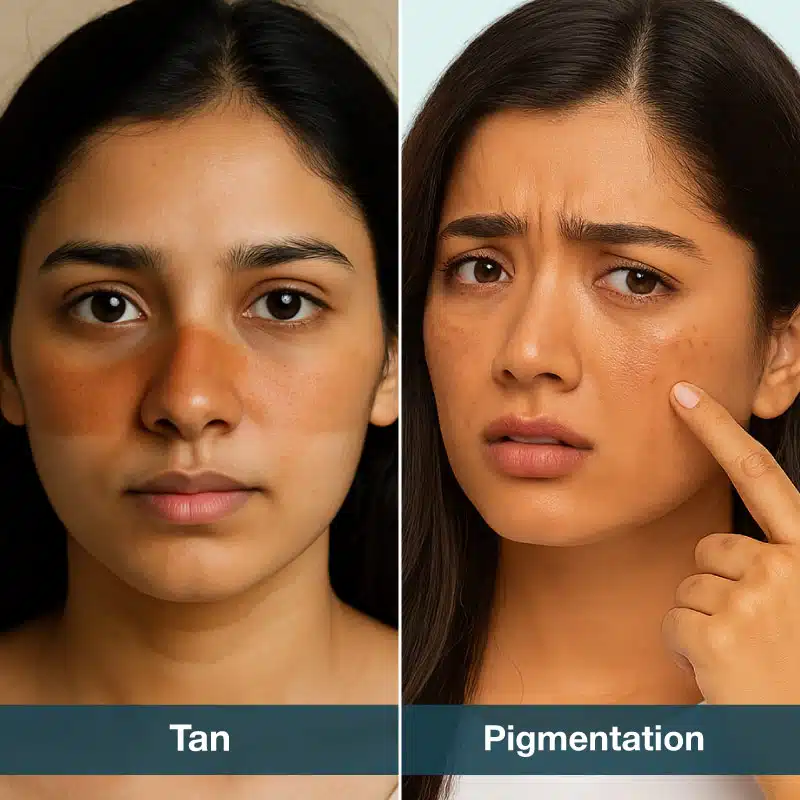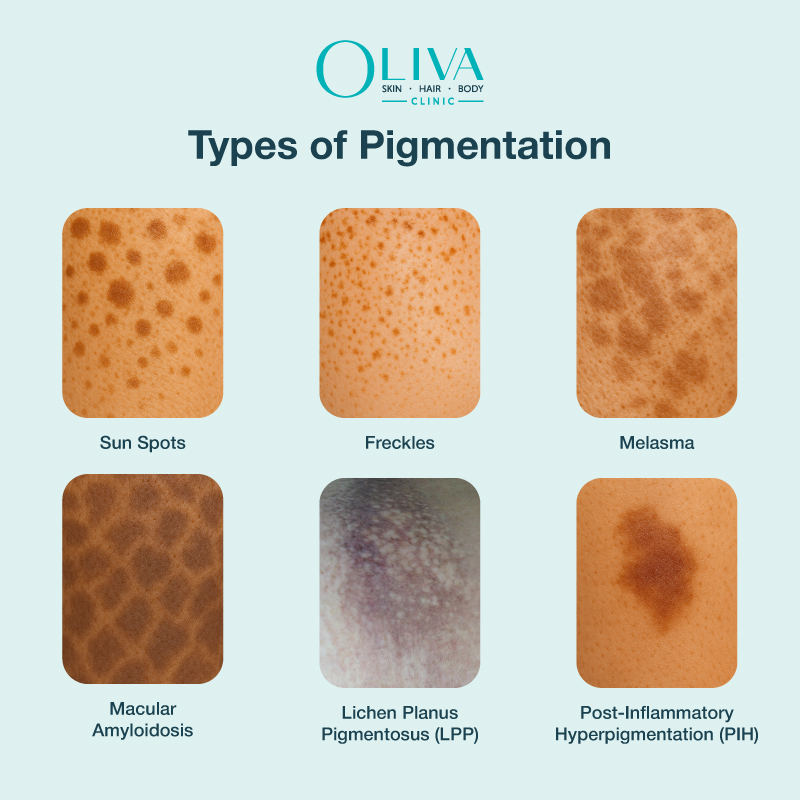In This Article
How to Prevent Tanning While Swimming: Expert Tips To Protect Skin
Swimming is a fantastic way to stay fit and enjoy the water, especially during the hot summer months. However, prolonged exposure to the sun while swimming can lead to unwanted tanning and skin damage. The sun’s ultraviolet (UV) rays are particularly potent when reflected off water surfaces, making it easier to get sunburned or tanned even though you feel cool in the water. Further, Chlorine, often added in pool water so it acts as a disinfectant can also exacerbate skin damage by drying out your skin, making it more susceptible to UV rays. Does this mean you must not go swimming or enjoy time in the water? Not at all. There are preventive measures that you take and continue to have fun the in pool.
In This Article

How To Prevent Tanning From Swimming?
Here are some effective tips and strategies to prevent tanning while swimming and protect your skin from harmful UV rays and chlorine:
-
Use a Broad-Spectrum Sunscreen:
Using a broad-spectrum sunscreen is your first line of defence against UV rays, crucial for preventing tanning while swimming. A broad-spectrum sunscreen shields your skin from both UVA and UVB rays, which are responsible for tanning and sunburns.
To optimise sun protection with a sunscreen, follow these expert tips:
- Choose a sunscreen with an SPF of at least 30, as higher SPF provides more prolonged protection against UV rays.
- Opt for a water-resistant formula to ensure the sunscreen remains on your skin even while swimming, as water can easily wash away regular sunscreen.
- It’s essential to apply sunscreen 15-30 minutes before entering the pool, giving it time to form a protective layer on your skin.
- Reapply sunscreen every two hours, or immediately after swimming or drying yourself, to maintain continuous protection. This regular reapplication is vital because even water-resistant sunscreens can wear off over time, especially with the friction from water and towels.
By following these tips, you can effectively prevent tanning while swimming and ensure your skin remains protected from the harmful effects of UV rays.
-
Wear Protective Swimwear:
Protective swimwear plays a vital role in reducing skin exposure to the sun while swimming. Rash guards are an excellent choice, as they cover your torso and arms, shielding your skin from direct sunlight. These garments are typically made from UV-protective fabric, which offers an additional layer of defence against harmful rays. Similarly, swim leggings protect your legs and are designed with UV-protective materials to minimise sun exposure. Additionally, swim caps and hats are crucial for safeguarding your scalp and face, which are often the most exposed and vulnerable areas to UV radiation.
By wearing protective gear while swimming, you can significantly reduce the risk of tanning and other sun-related skin damage.
-
Swim During Off-Peak Hours:
Swimming during off-peak hours is an effective strategy to minimise exposure to the sun’s most intense rays. The sun’s UV radiation is strongest between 10 a.m. and 4 p.m., making this period the riskiest time for tanning and sun damage. By choosing to swim outside these hours, you can significantly reduce your risk. The best times to swim are early in the morning, before 10 a.m., and late in the afternoon, after 4 p.m. During these times, the sun is lower in the sky, and its rays are less direct, thereby decreasing the intensity of UV exposure. This approach not only helps in preventing tanning but also ensures a safer and more enjoyable swimming experience.
-
Seeking Shade:
This is an important strategy for protecting your skin from constant sun exposure while swimming. Taking regular breaks in shaded areas can give your skin much-needed respite from the sun’s harsh rays. Using large umbrellas can help create shaded spots around the pool, providing a cool and protected area to rest. Additionally, many pools offer cabanas or other shade structures that can be utilized for this purpose. By incorporating these shaded breaks into your swimming routine, you can avoid the risk of tanning and sun damage, allowing your skin to recover and stay protected throughout your time at the pool
-
Protecting Your Skin From Chlorine:
This is a crucial, as chlorine in pool water can exacerbate tanning by drying out your skin and making it more susceptible to UV damage. To minimise the effects of chlorine, start by rinsing your skin with fresh water before entering the pool. This pre-rinse helps saturate your skin, making it less likely to absorb as much chlorine. Additionally, applying a barrier cream or petroleum jelly to exposed areas of your skin can create a protective layer that further reduces chlorine absorption. After swimming, reapply sunscreen to ensure continued protection from both UV rays and the drying effects of chlorine. This combination of rinsing, barrier protection, and sunscreen reapplication helps maintain your skin’s health and prevent tanning from chlorine water.
-
Follow After-Swim Skin Care:
Using proper after-swim skin care is essential to prevent and reduce tanning. Start by showering immediately after swimming to rinse off chlorine and other chemicals that can irritate and dry out your skin. This step helps remove any residual substances that may contribute to skin damage and tanning. After your shower, apply a hydrating lotion to restore moisture to your skin, counteracting the drying effects of chlorine and sun exposure. Additionally, using aloe vera gel can soothe your skin and help reduce any tanning. Aloe vera is known for its cooling and healing properties, making it an excellent choice for post-swim skin care. By following these steps, you can keep your skin healthy, hydrated, and less prone to tanning.
Takeaway
Preventing tanning while swimming requires a combination of protective measures and smart habits. By using broad-spectrum sunscreen, wearing protective swimwear, swimming during off-peak hours, seeking shade, protecting your skin from chlorine in the pool, and following a comprehensive after-swim skincare routine, you can effectively prevent tanning while swimming. Additionally, if tanning does occur, natural remedies like mixing lemon juice with honey, yogurt with a pinch of turmeric, and cucumber juice, as well as professional treatments like chemical peels and laser treatments, can help lighten the swimming tan and restore your skin’s natural tone. Remember, consistent care and protection are key to maintaining healthy, tan-free skin while swimming. By following these simple tips, you can protect your skin.
Frequently Asked Questions On How to Prevent Tanning While Swimming
Yes, swimming can give you a tan. When you swim outdoors, your skin is exposed to ultraviolet (UV) rays from the sun. Water can reflect and intensify UV rays, increasing the likelihood of tanning. Even on cloudy days, UV rays can penetrate the clouds and reach your skin, leading to tanning.
No, a swimming tan is not permanent. Tanning occurs due to the increased production of melanin in response to UV exposure. As your skin naturally exfoliates and regenerates, the tan will gradually fade. This process can take several weeks to months, depending on your skin type and the intensity of the tan and regular sun exposure. Using exfoliants, moisturisers, and sun protection can help eliminate the tan quickly.
To remove a swimming tan, exfoliate your skin gently, moisturise regularly, and use sunscreen to prevent further tanning. Natural remedies like lemon juice, aloe vera, and yogurt can help lighten the tan. For stubborn tan, consider professional treatments like chemical peels or laser toning.
Yes, you can get a tan in a swimming pool if it is outdoors. The UV rays from the sun can penetrate the water and reach your skin, causing a tan. Additionally, water can reflect UV rays, potentially increasing your exposure.
While coconut oil can provide some moisture to the skin, it is not an effective sunscreen. Applying coconut oil before swimming will not protect you from UV rays and can increase the risk of tanning or sunburn. It is better to use a broad-spectrum, water-resistant sunscreen for sun protection.
Yes, swimming in water can make you tan faster. Water can reflect and intensify UV rays, increasing your exposure to them. Additionally, being in water can wash away sunscreen if it is not water-resistant, leaving your skin more vulnerable to UV radiation.
A swimmer’s tan results from prolonged exposure to UV rays while swimming outdoors. The UV rays stimulate the production of melanin, the pigment responsible for tanning, as a defence mechanism against sun damage. Water can reflect UV rays, and the cooling effect of water might make you less aware of the sun’s intensity, leading to extended exposure.
A swimmer’s tan itself is not inherently harmful, but it indicates UV exposure, which can damage your skin. UV radiation can cause sunburn, premature aging, and increase the risk of skin cancer. It is essential to protect your skin from excessive UV exposure to maintain its health.
Read This Next

Difference Between Tan and Pigmentation: Causes, Signs & Treatments

Causes Of Pigmentation On Face: Treatments & Prevention Tips

Can Pigmentation Be Cured Permanently? Dermatologist’s Insights & Solutions

Types of Pigmentation: Causes, and Effective Treatments for Clearer Skin

How To Remove Pigmentation From Face Permanently & Naturally At Home?



